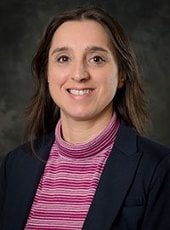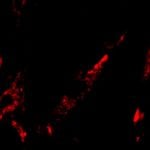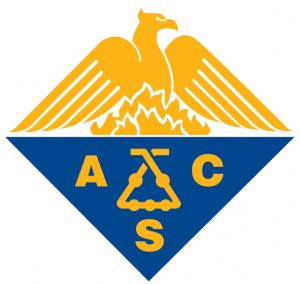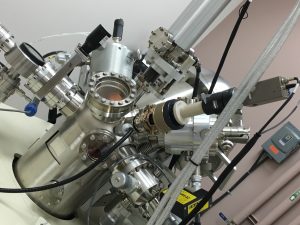 Dr. Loredana Valenzano and graduate student Gemechis D. Degaga published the paper “Part II: quantum mechanical prediction of heats of adsorption for C2-C4 hydrocarbons in MOF-74-Mg/Zn periodic structures” on Chemical Physics Letters.
Dr. Loredana Valenzano and graduate student Gemechis D. Degaga published the paper “Part II: quantum mechanical prediction of heats of adsorption for C2-C4 hydrocarbons in MOF-74-Mg/Zn periodic structures” on Chemical Physics Letters.
 Dr. Loredana Valenzano and graduate student Gemechis D. Degaga published the paper “Part II: quantum mechanical prediction of heats of adsorption for C2-C4 hydrocarbons in MOF-74-Mg/Zn periodic structures” on Chemical Physics Letters.
Dr. Loredana Valenzano and graduate student Gemechis D. Degaga published the paper “Part II: quantum mechanical prediction of heats of adsorption for C2-C4 hydrocarbons in MOF-74-Mg/Zn periodic structures” on Chemical Physics Letters.
 Haiying Liu (Chem), Ashutosh Tiwari (Chem), Ranjit Pati (Physics), along with graduate students Rashmi Adhikari, Mingxi Fang, Nethaniah Dorh, Cong Li, Jingtuo Zhang and Meghath Jaishi, published a paper titled “Near-Infrared Fluorescent Probes with Large Stokes Shifts for Sensing Zn(II) Ions in Living Cells” in ACS Sensors.
Haiying Liu (Chem), Ashutosh Tiwari (Chem), Ranjit Pati (Physics), along with graduate students Rashmi Adhikari, Mingxi Fang, Nethaniah Dorh, Cong Li, Jingtuo Zhang and Meghath Jaishi, published a paper titled “Near-Infrared Fluorescent Probes with Large Stokes Shifts for Sensing Zn(II) Ions in Living Cells” in ACS Sensors.
Their research in using fluorescent probes to find cancer cells was covered by Michigan Tech News, Phys.org, eCancer, Science Daily, Health Medicine Network, R&D Magazine and many other publications worldwide.
Science360, a science news website published by the National Science Foundation (NSF), spotlighted the fluorescent probe research of Liu as one of its headline stories on March 30.
 The Undergraduate Research Symposium highlights the amazing cutting-edge research being conducted on Michigan Tech’s campus by some of our best and brightest undergraduate students.
The Undergraduate Research Symposium highlights the amazing cutting-edge research being conducted on Michigan Tech’s campus by some of our best and brightest undergraduate students.
The students showcasing their work today have spent a significant portion of the past year working alongside Michigan Tech faculty and graduate students to explore, discover and create new knowledge. They’ve spent long hours in the lab or out in the field designing experiments, gathering data, creating new models and testing hypotheses. They’ve applied their classroom knowledge in new and sometimes unexpected ways, and developed new skills that will propel them forward in their careers.
Title: Synthesis of a Fructopyranose Mimic as a Carbohydrate Probe for Fructose Transporters
Advisor: Dr. Marina Tanasova
Overview: Ferrier’s goal is to synthesize stable fructopyranose mimics as tools to distinguish cancer from normal cells on the basis of fructose uptake efficiency.
Title: Sulfenamide Form of Omeprazole in Interaction with the Primary Amino Acid Sites of H+/K+ ATPase as Investigated at Electronic Structure Level
Advisor: Dr. Loredana Valenzano
Overview: Lilla looked at the drug Omeprazole (Prilosec®), which is the first medication that treats Acid Reflux, and serves as proton pump inhibitors (PPI). It inhibits the enzymes CYP2C19 and CYP3A4, and prevents the final step of acid production and basal and stimulated acid secretion. Lilla used Density Functional Theory (DFT) to determine the equilibrium geometries for each molecule using different levels of theory.
Title: Synthesis and Characterizaion of Novel Photoactive Lanthanide Complexes
Advisor: Dr. Rudy Luck
Overview: Wilharm’s goal was to use the unique photochemical properties of three lanthanide metals, sarmarium, europium, and terbuim, with a novel photoactive ligand to create a new catalyst that harnesses light to push reactions.
 Research from the laboratory of Tarun Dam (Chem) has been selected for an oral presentation at the ‘Spotlight Session’ of 2017 Experimental Biology/American Society for Biochemistry and Molecular Biology Annual Conference in Chicago.
Research from the laboratory of Tarun Dam (Chem) has been selected for an oral presentation at the ‘Spotlight Session’ of 2017 Experimental Biology/American Society for Biochemistry and Molecular Biology Annual Conference in Chicago.
This is an international conference attended by scientists from diverse areas.
 The Upper Peninsula Local Section of the American Chemistry Society invites you to the 2017 Student Research Symposium. This year’s research symposium will be held on Northern Michigan’s campus within the atrium of the New Science Facility on Saturday, March 25. The event starts at 9:30 a.m.
The Upper Peninsula Local Section of the American Chemistry Society invites you to the 2017 Student Research Symposium. This year’s research symposium will be held on Northern Michigan’s campus within the atrium of the New Science Facility on Saturday, March 25. The event starts at 9:30 a.m.
All are welcome. There is no charge to attend. RSVP here.
 There is something very noble about Xiaohu Xia’s research. He wants to use palladium, platinum, ruthenium and other corrosion-resistant metals to refine tests to detect biomarkers for cancer and infectious diseases. To do so, he plans to use nanostructures made of these noble metals that mimic natural enzymes and has earned a CAREER Award from the National Science Foundation (NSF) to focus on this research.
There is something very noble about Xiaohu Xia’s research. He wants to use palladium, platinum, ruthenium and other corrosion-resistant metals to refine tests to detect biomarkers for cancer and infectious diseases. To do so, he plans to use nanostructures made of these noble metals that mimic natural enzymes and has earned a CAREER Award from the National Science Foundation (NSF) to focus on this research.
The grant covers five years, totaling $457,783, and enables Xia to dig deep into the structure-property relationships of the bimetallic peroxidase mimics at the atomic level. Even small changes in nanostructures can produce big results, demonstrated by his lab with improvements in the catalytic efficiencies of iridium-coated palladium and ruthenium nanostructures.
Read the full story on the Michigan Tech news website.
 Loredana Valenzano (Chem) recently participated in the GIAN program of the Government of India as a co-organizer with Ravindra Pandey (Chem).
Loredana Valenzano (Chem) recently participated in the GIAN program of the Government of India as a co-organizer with Ravindra Pandey (Chem).
Valenzano gave a series of lectures on modeling of materials to graduate students and faculty members at the workshop. She introduced state-of-the-art computational modeling methods to the next generation of students in chemistry, physics and materials science. The workshop was organized by Guru Jambeshwar University of Science and Technology at HIsar, Harayana, India.
Michigan Tech has a large presence in the GIAN program — Amitabh Narain (MEEM), Chandrashekhar Joshi (Bio) and S. Komar Kawatra (ChE) have also participated in the program activities in India.
During the Nov. 3, 2016, Climate Café event, Robert Handler of Michigan Tech’s Sustainable Futures Institute discusses energy efficiency and ways to mitigate climate change. (Video by Keweenaw Now)
The fourth in a series of discussions on climate change will take place from 6 to 8 p.m. tonight at the Orpheum/Studio Pizza in Hancock.
The purpose of this fourth event in the series is to continue the discussions about what activities and topics we should focus on as a local community when we think about climate change impacts and our responses to those impacts.
There are lots of potential strategies to mitigate or adapt to the impacts of climate change, and we want to gather a community of interested people who will help plan the future priorities for our grassroots organization. We will have a few five minute presentations from local people who are developing responses to climate change, and then we will break into groups according to your interests, and start making plans.
The series is organized by the Keweenaw Climate Community, sponsored by the local chapter of the American Chemical Society and the Department of Social Sciences at Michigan Tech.
More can be found out by reading this story in Keweenaw Now.
 The Applied Chemical and Morphological Analysis Laboratory (ACMAL) on campus received a new PHI 5800 X-ray photoelectron spectrometer (XPS). The PHI5800 XPS is equipped with dual source anode (Al and Mg), a hemispherical analyzer, for XPS and AES analysis, including elemental mapping capabilities, an electron gun source for AED analysis, an ion sputter gun for depth profiling, a heatable sample stage, and stage tilting for angle-resolved XPS.
The Applied Chemical and Morphological Analysis Laboratory (ACMAL) on campus received a new PHI 5800 X-ray photoelectron spectrometer (XPS). The PHI5800 XPS is equipped with dual source anode (Al and Mg), a hemispherical analyzer, for XPS and AES analysis, including elemental mapping capabilities, an electron gun source for AED analysis, an ion sputter gun for depth profiling, a heatable sample stage, and stage tilting for angle-resolved XPS.
The XPS was generously donated by the Army Research Laboratories with the help from the Department of Chemistry. The new XPS will help ACMAL and chemistry students greatly expand their research.
The Applied Chemical and Morphological Analysis Laboratory is a Michigan Tech University Core Facility which is part of the Materials Characterization & Fabrication Facilities.
Graduate student Gemechis Degaga (Chem) and Loredana Valenzano (Chem) have published the paper “Part I: C2-C4 Hydrocarbons Separation Addressed via Molecular Cluster Models Carved Out from Periodic MOF-74-Mg/Zn Structures” on Chemical Physics Letters. The paper can be found here.